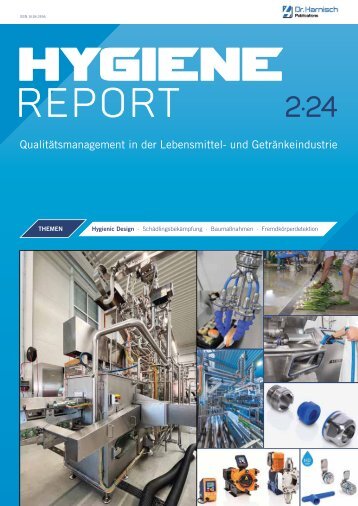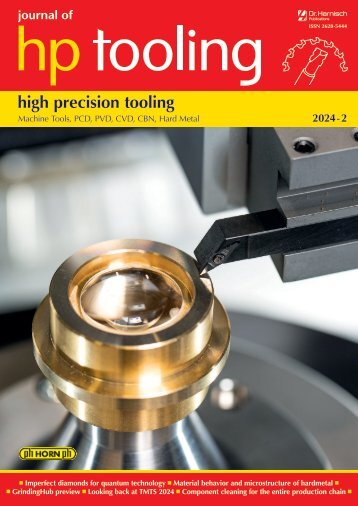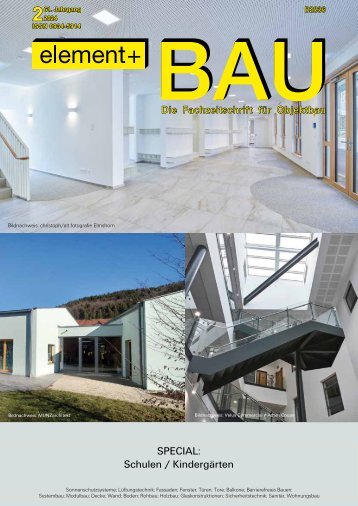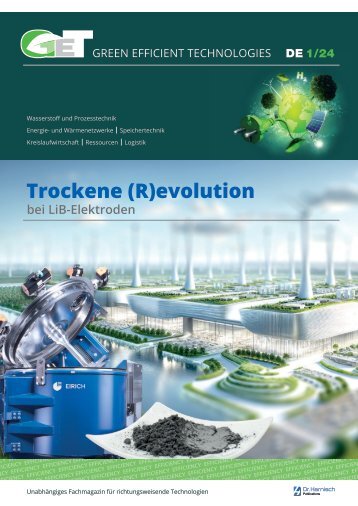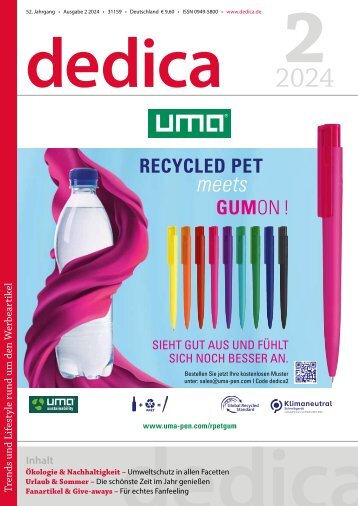GET – GREEN EFFICIENT TECHNOLOGIES EN 1/23
- Text
- Efficiency
- Hydrogen
- Pumps
- Technologies
- Efficient
- Solutions
- Materials
- Operating
- Sealing
- Applications
- Harnisch.com
From the research Heat
From the research Heat pumps Listening closely Heat pumps in auditory experiments Hans-Jörg Risse The noise emissions of air/water heat pumps are crucial for their possible applications and acceptance by customers. It is therefore not only their sound power level, but also the subjective perception of noise that is important. Heat pumps are becoming more and more popular and about three out of four of the devices sold are air/water heat pumps. Under the German “climate package” launched in early 2020, the German government bears a high proportion of the investment costs for the installation of these heat generators in new or modernised existing buildings. Apart from the financial aspect, the sound of an air/water heat pump compared to a brine/water heat pump is of key importance to customers. This is because especially in new development areas where these heat generators are particularly in demand, the plots of land and, consequently the distances between the individual houses are becoming smaller and smaller. The issue of noise pollution is therefore gaining importance. According to a survey conducted by the German Environment Agency, 60 percent of the people interviewed feel disturbed by the noises of the neighbourhood. Only road traffic is perceived as even more disturbing. To ensure that the environmentally friendly heating solution does not cause any neighbourhood disputes or other complaints, Buderus listens carefully to the sounds generated by its products and has even tested what cannot be heard. Sound as an auditory event The measurable sound pressure level is given in decibels. It occurs when a noise source causes the air to vibrate and thus changes the air pressure at a certain distance. The greater the change in air pressure, the higher the sound pressure level. Zero decibel corresponds approximately to the threshold of human hearing. The crucial factor for customers, however, is not only the sound pressure level, but rather how the sounds of the heat pump are perceived, as this is what their acceptance depends on. The keyword here is psychoacoustics. This scientific Relationship between perceived loudness (sone) and sound level (phon) S (sone) discipline refers to sound as an auditory event and studies the relationship between physical sound stimulus and the resulting auditory perception in humans. The reason for studying this is that typical physical measurements do not always accurately represent the auditory perception – the sound level does not always correspond to the perceived loudness. The latter depends on the sound pressure level, but also on the frequency, bandwidth and duration of the signals and is given in sone. 1 sone is equivalent L s (phon) Source: Fig. 1: Psychoacoustics Dickreiter, Handbuch studies the der relationship Tonstudiotechnik, between the volume physical 1, measurement p.113 of sound and its subjective perception, which is indicated as the perceived loudness. (All photos: Buderus) Source: Dickreiter. Handbuch der Tontechnik, Band 1, S. 113 24 GREEN EFFICIENT TECHNOLOGIES 2023
From the research Heat pumps Fig. 2: The Fraunhofer IBP studies the perception of a heat pump sound. to 40 phons, i. e. 40 dB at 1 kHz. From having to conduct further series of 40 phons, the loudness doubles for tests with future heat pumps. each 10 dB increase. Below 40 phons, To ensure that all test persons even smaller changes in the sound were able to assess the sounds level result in a doubling of the perceived loudness. the team recorded the sounds of under exactly the same conditions, The perceived loudness has an the heat pumps in advance. The enormous effect on people’s well-being. If a sound is perceived as disting heating output of 6.41 kW and a Logatherm WpLS13.2 has a modulaturbing, the brain releases stress COP of 4.87 (at A7/W35). The competing device has a modulating heating hormones and the body goes on alert – even during sleep. If this noise-induced alert persists, it is harmful to health. output of 5.63 kW and a COP of 4.87 (at A7/W35). First, the devices ran in different modes such as “Fan Only”, “Night Mode” or “Max Speed”. Second, they were tested in the field with realistic ambient noises and in a semi-anechoic chamber (non-absorbing floor, walls and ceiling covered in sound-absorbing material) at the Fraunhofer IBP. One of the reasons for taking measurements in different rooms is that in reality there are background noises such as traffic; a second reason is the fact that the sound power is distributed over a larger area as the distance increases, with the sound pressure level decreasing as a result. Sound propagation is moreover influenced by massive obstacles such as buildings and walls, reflections from non-absorbing surfaces such as plastered and glass facades of buildings or floors with asphalt and stone surfaces or sound-absorbing surfaces such as freshly fallen snow or bark mulch. To record the sound under real conditions, the team used artificial heads with auricles and torso. These reflect the sound of the heat pumps in the same way as humans and later in the auditory experiment allow an aurally correct presentation Auditory experiment to assess the perception of the sound of a product In auditory experiments, researchers of the Fraunhofer Institute for Building Physics IBP (Fraunhofer IBP) in Stuttgart Vaihingen determine how physical and psychoacoustic parameters affect the acceptance and annoyance of the sounds caused by heat pumps. Two heat pumps, inclu ding the Logatherm WPLS.2 split heat pump from Buderus, were the subject of such a study. Some 60 test persons aged 18 to 60 assessed various sounds of the heat pumps. The aim of the experiment was to make reliable predictions about how disturbing or annoying people perceive the sound emissions of the devices without Fig. 3: The team used artificial heads to record the sound under real conditions. Here, measurements are taken in the semi-anechoic chamber of the Fraunhofer IBP. GREEN EFFICIENT TECHNOLOGIES 2023 25
- Seite 1 und 2: GREEN EFFICIENT TECHNOLOGIES EN 1/2
- Seite 3 und 4: Editorial Harvest the sun Humanity
- Seite 5 und 6: HAMPRO® HIGH-PRESSURE PROCESS TECH
- Seite 7 und 8: Leading article sion. In fact, it i
- Seite 9 und 10: Cover story Efficiency Class IE2 IE
- Seite 11 und 12: Cover story Myth 3: Journal bearing
- Seite 13 und 14: Cover story Sealless pumps, both ce
- Seite 15 und 16: Energy carrier hydrogen Transport L
- Seite 17 und 18: Energy carrier hydrogen Material se
- Seite 19 und 20: Energy carrier hydrogen Material se
- Seite 21 und 22: Energy efficiency Heat recovery Fig
- Seite 23: Energy efficiency Heat recovery Fig
- Seite 27 und 28: From the research Heat pumps Fig. 6
- Seite 29 und 30: Efficient manufacturing Special mec
- Seite 31 und 32: Decarbonisation Supply traffic Fig.
- Seite 33 und 34: Decarbonisation Supply traffic shou
- Seite 35 und 36: Decarbonisation Operating power max
- Seite 37 und 38: Decarbonisation Operating power pro
- Seite 39 und 40: Decarbonisation Production local su
- Seite 41 und 42: Decarbonisation Production fast swi
- Seite 43 und 44: Circular economy Production deep) o
- Seite 45 und 46: PROCESS TECHNOLOGY&COMPONENTS © Ae
- Seite 47 und 48: Companies - Innovations - Products
- Seite 49 und 50: Companies - Innovations - Products
- Seite 51 und 52: Brand name register Lutz Pumpen Gmb
- Seite 54: Dr. Harnisch Verlags GmbH Eschenstr
Unangemessen
Laden...
Magazin per E-Mail verschicken
Laden...
Einbetten
Laden...




































































































